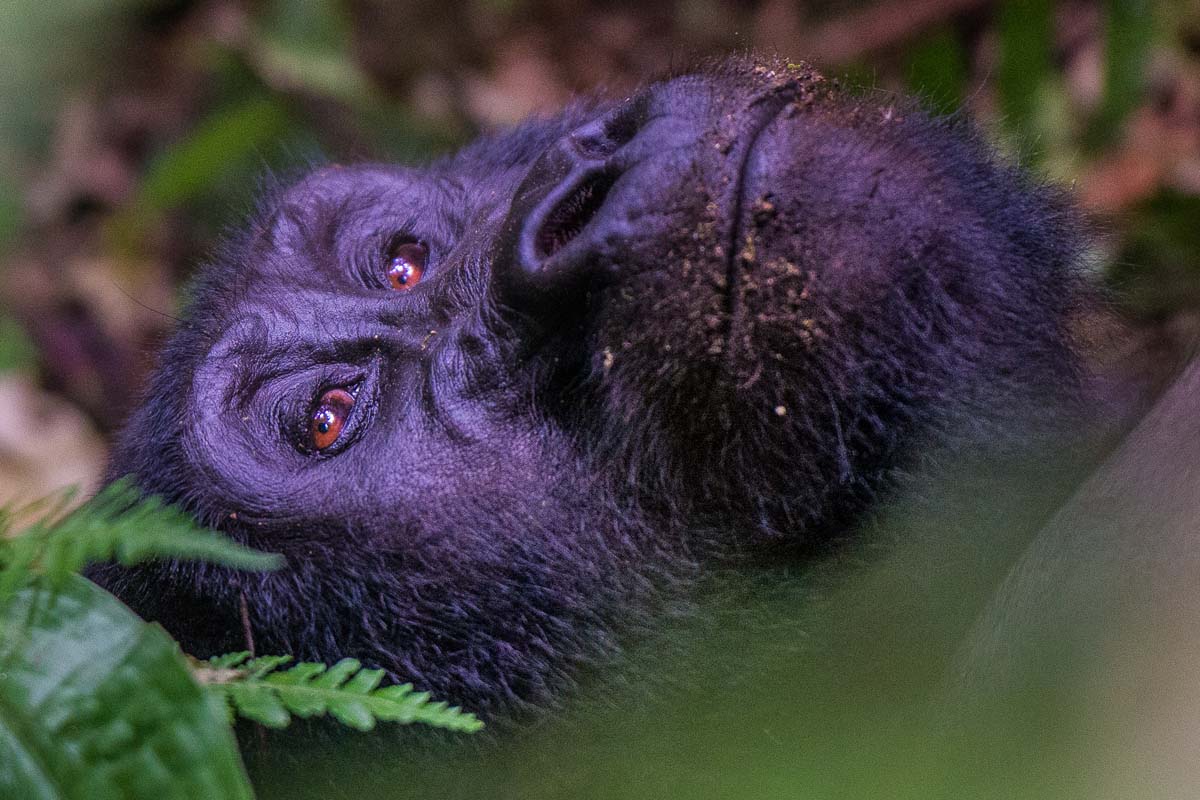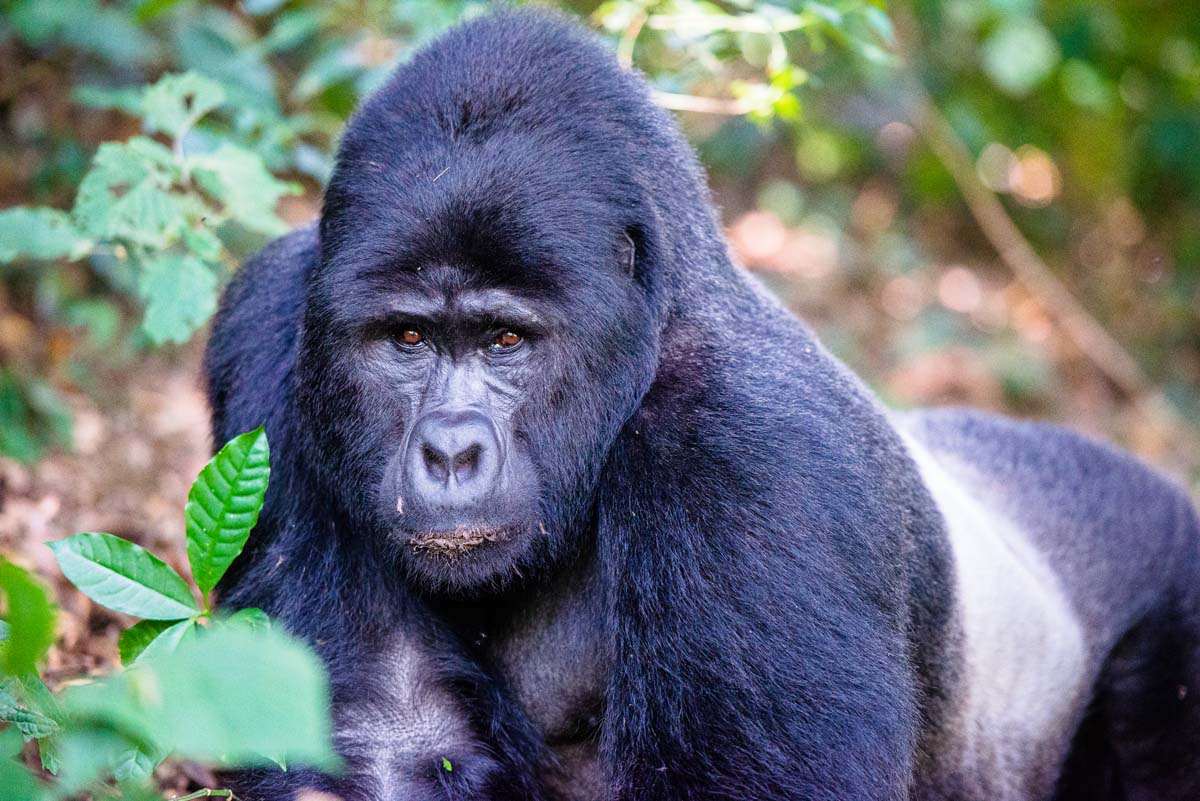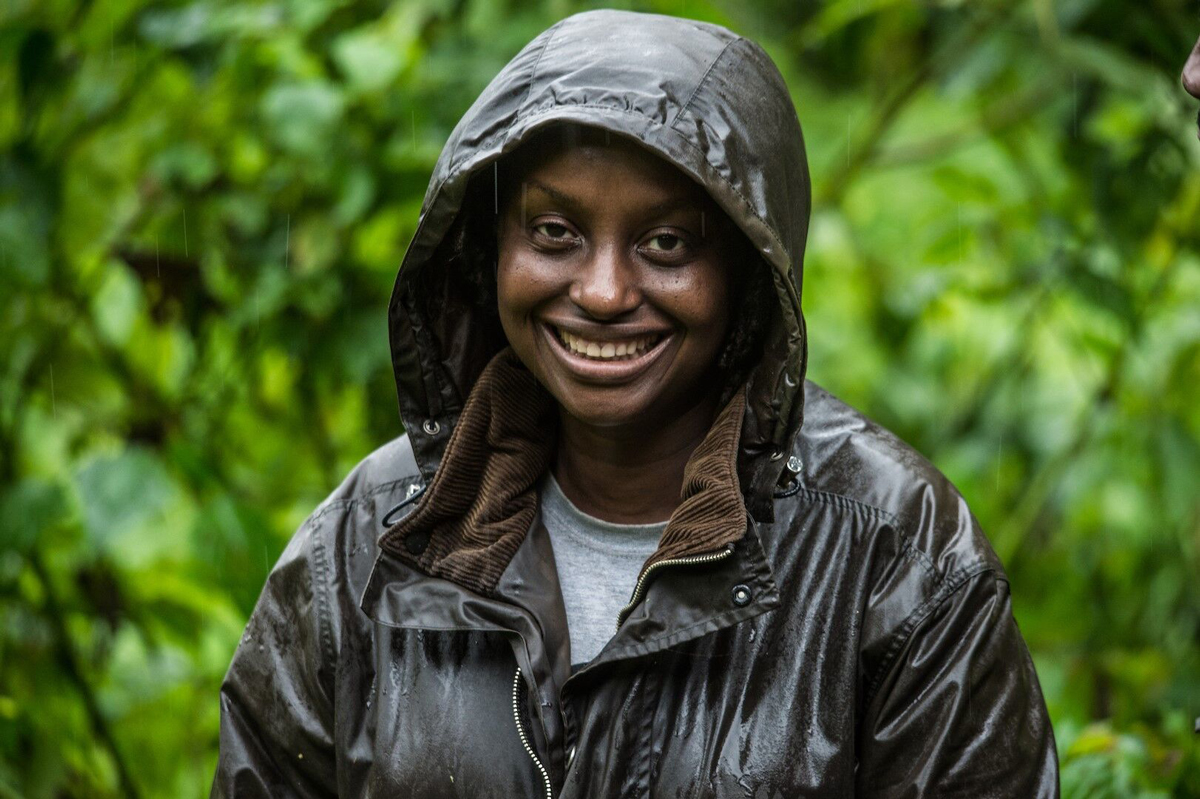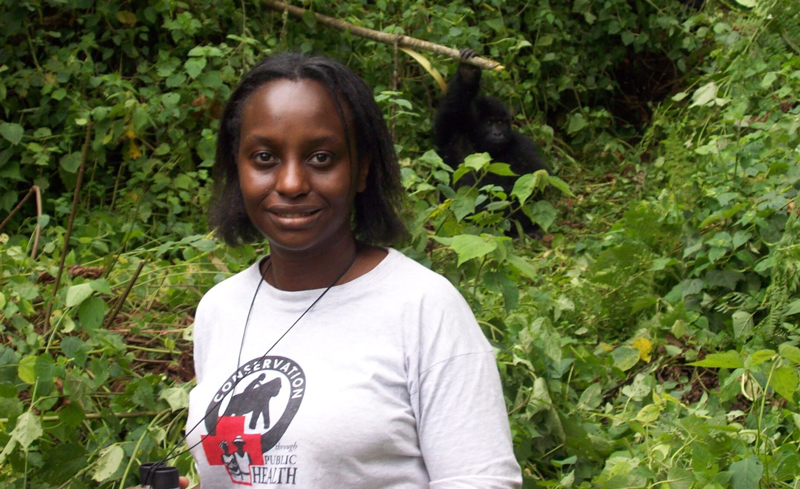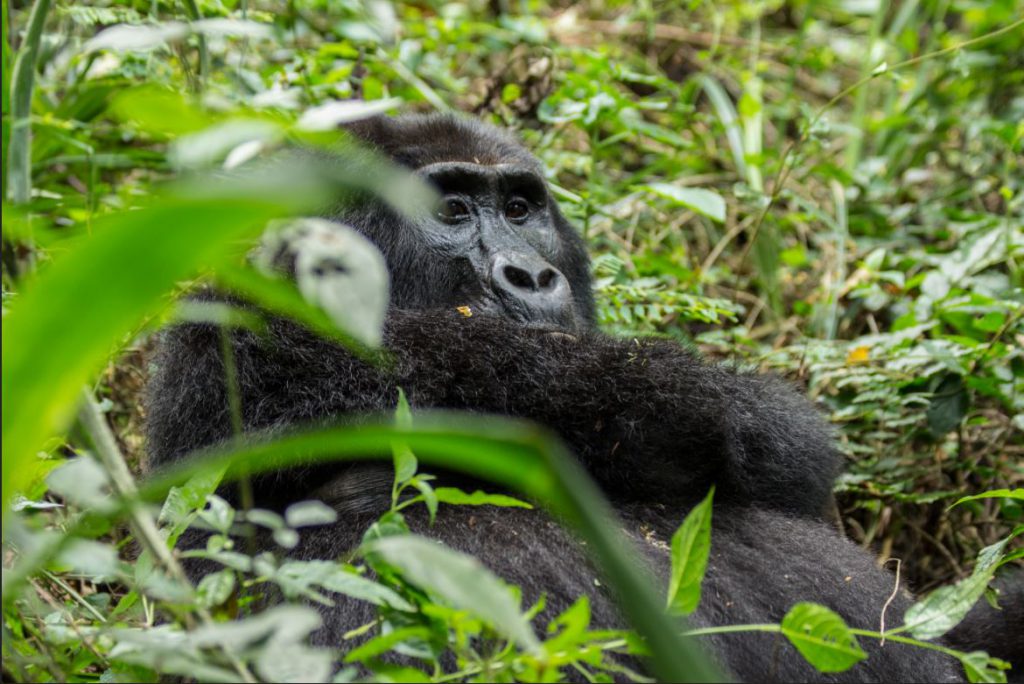Edward Moores joined us on a trip to Uganda recently. Here he tells the tale of his adventures in this natural wildlife-wonderland.
In January this year we travelled to Uganda primarily to see the Kibale chimpanzees and Bwindi mountain gorillas.
The main photographic challenges in Uganda are moisture and light and shadows under the dense jungle canopy. Having previously travelled in Asia during monsoon season I knew bin liners protected against rain and minimum lens changes would reduce risks from moisture and fogging. A full-frame camera with high ISO settings and quality light sensors together with wide aperture lenses addressed the variable light conditions. I used a 70–200mm f2.8 lens with a 2x teleconverter on a full-frame Nikon D800E. A member of our group rented a similar kit set-up; a great way to road test a possible future purchase! Tackling the camera weight on long treks was solved using a cross body strap; an inexpensive but very effective piece of kit that will help you avoid neck ache!
During your travels a good habit is to always make sure you “reset” each morning; select aperture priority mode, use a wide aperture setting and double check you have an SD card with plenty of space. You never know when you will come across something exciting, like monkeys in the trees or gorillas on the track, so be prepared!. During our gorilla trek we stumbled across a wonderful busy troupe of monkeys just 30m from our start point. Having done my standard morning checks I was ready to go and able to immediately capture these charming moments.
Our trip was built around three key events, chimpanzee trekking in Kibale National Forest, gorilla trekking in Bwindi Impenetrable Forest and bird spotting on the Entebbe “swamp”. Three different environments, but the choice of camera set-up worked really well. Shooting in raw and using Lightroom to develop and edit helped me to create some great images. Be sure to look out for the gigantic prehistoric looking shoebill stork in the Entebbe swamp, silverbacks in Bwindi and chimps and monkeys in Kibale. If you’re really lucky then you’ll get to see the tree-climbing lions of Queen Elizabeth National Park.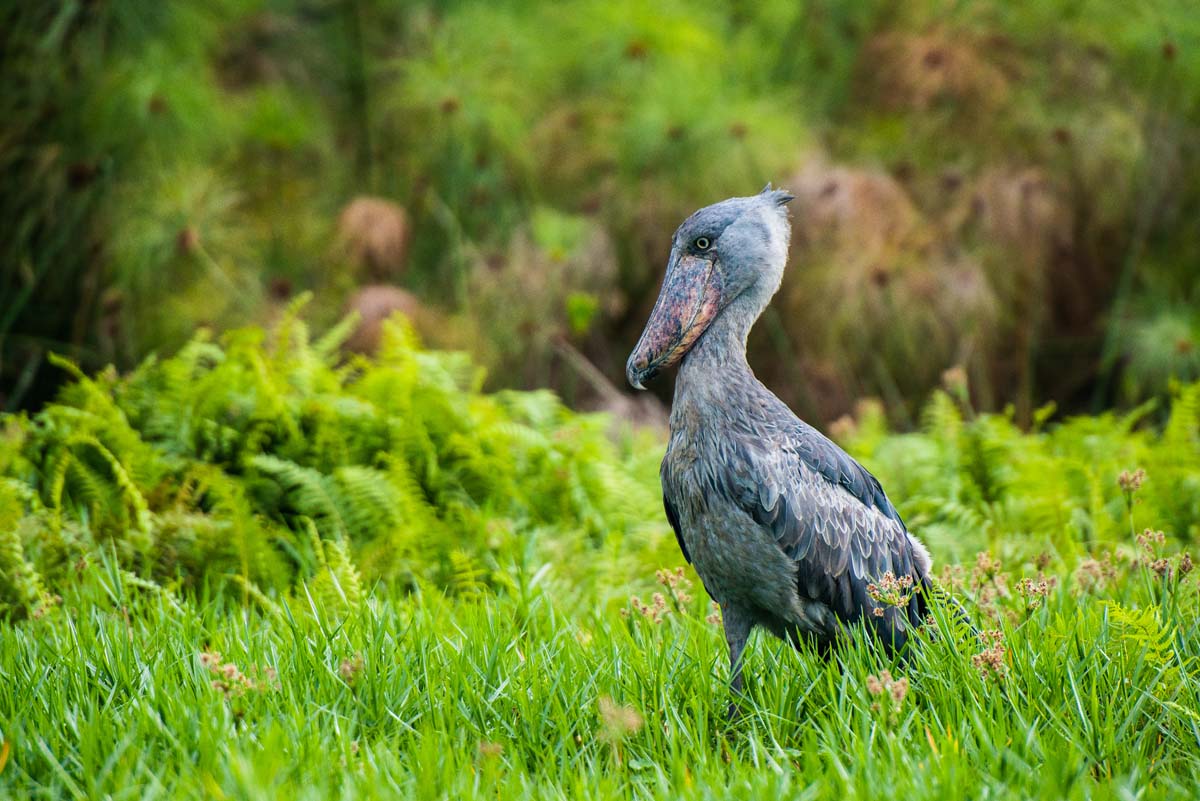
Keep the amount of kit in your daypack to a minimum. During a very energetic and fast moving chimpanzee trek in Kibale, I had a large camera-kit duffle bag with me which was too big for scrabbling through the undergrowth: I got my photos but also a strenuous workout!
It’s a very thrilling experience being so close to the gorillas. Your guides will do a great job of getting you up close with these majestic creatures in their natural surroundings. A silverback passed me with just centimetres to spare; a heart stopping but thrilling experience. Your photos will create fabulous memories so its important to plan ahead and make sure you are confident with your set-up a few weeks before you head out.
Check out more of Edward’s photos from the trip in this gallery
[Best_Wordpress_Gallery id=”42″ gal_title=”In Search Of Primates”]
